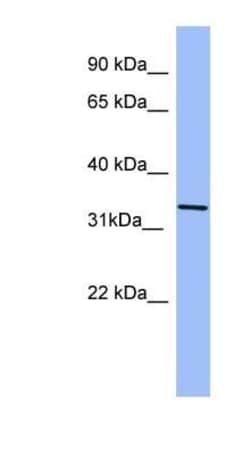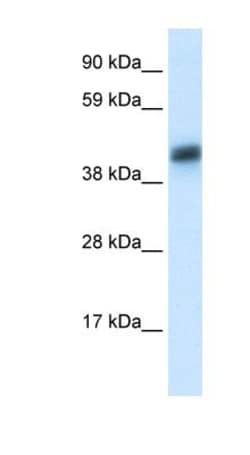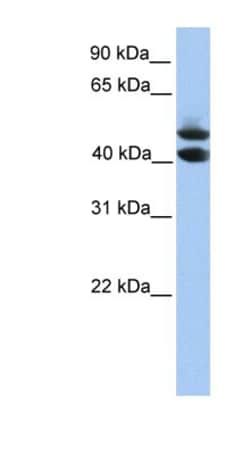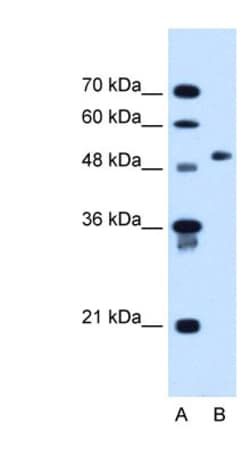KIR2DL4/CD158d Antibody, Novus Biologicals™
Manufacturer: Fischer Scientific
Select a Size
| Pack Size | SKU | Availability | Price |
|---|---|---|---|
| Each of 1 | NBP154605-Each-of-1 | In Stock | ₹ 43,387.50 |
NBP154605 - Each of 1
In Stock
Quantity
1
Base Price: ₹ 43,387.50
GST (18%): ₹ 7,809.75
Total Price: ₹ 51,197.25
Antigen
KIR2DL4/CD158d
Classification
Polyclonal
Conjugate
Unconjugated
Formulation
PBS, 2% Sucrose with 0.09% Sodium Azide
Gene Alias
103AS, 15.212, CD158 antigen-like family member D, CD158d antigen, CD158DKIR103ASKiller cell inhibitory receptor 103AS, G9P, killer cell immunoglobulin-like receptor 2DL4, killer cell immunoglobulin-like receptor, two domains, long cytoplasmic tail, 4, killer Ig receptor, KIR103, KIR-103AS, MHC class I NK cell receptor KIR103AS, natural killer cell inhibitory receptor, NK cell receptor
Host Species
Rabbit
Molecular Weight of Antigen
30 kDa
Quantity
100 μL
Research Discipline
Immunology
Gene ID (Entrez)
3805
Target Species
Human
Isotype
IgG
Applications
Western Blot
Concentration
0.5 mg/ml
Dilution
Western Blot 1.0 ug/ml
Gene Accession No.
Q8NHK1
Gene Symbols
KIR2DL4
Immunogen
Synthetic peptides corresponding to KIR2DL4(killer cell immunoglobulin-like receptor, two domains, long cytoplasmic tail, 4) The peptide sequence was selected from the middle region of KIR2DL4. Peptide sequence VSVTGNPSSSWPSPTEPSFKTGIARHLHAVIRYSVAIILFTILPFFLLHR The peptide sequence for this immunogen was taken from within the described region.
Purification Method
Affinity purified
Regulatory Status
RUO
Primary or Secondary
Primary
Reconstitution
Centrifuge the vial of lyoph antibody at 12,000 x g for 20 seconds. Add 50μL of distilled water. Vortex followed by centrifuge again to pellet the solution.Final concentration is 1mg/mL in PBS buffer.
Content And Storage
Store at 4°C short term. Aliquot and store at -20°C long term. Avoid freeze-thaw cycles.
Related Products
Description
- KIR2DL4/CD158d Polyclonal specifically detects KIR2DL4/CD158d in Human samples
- It is validated for Western Blot.









